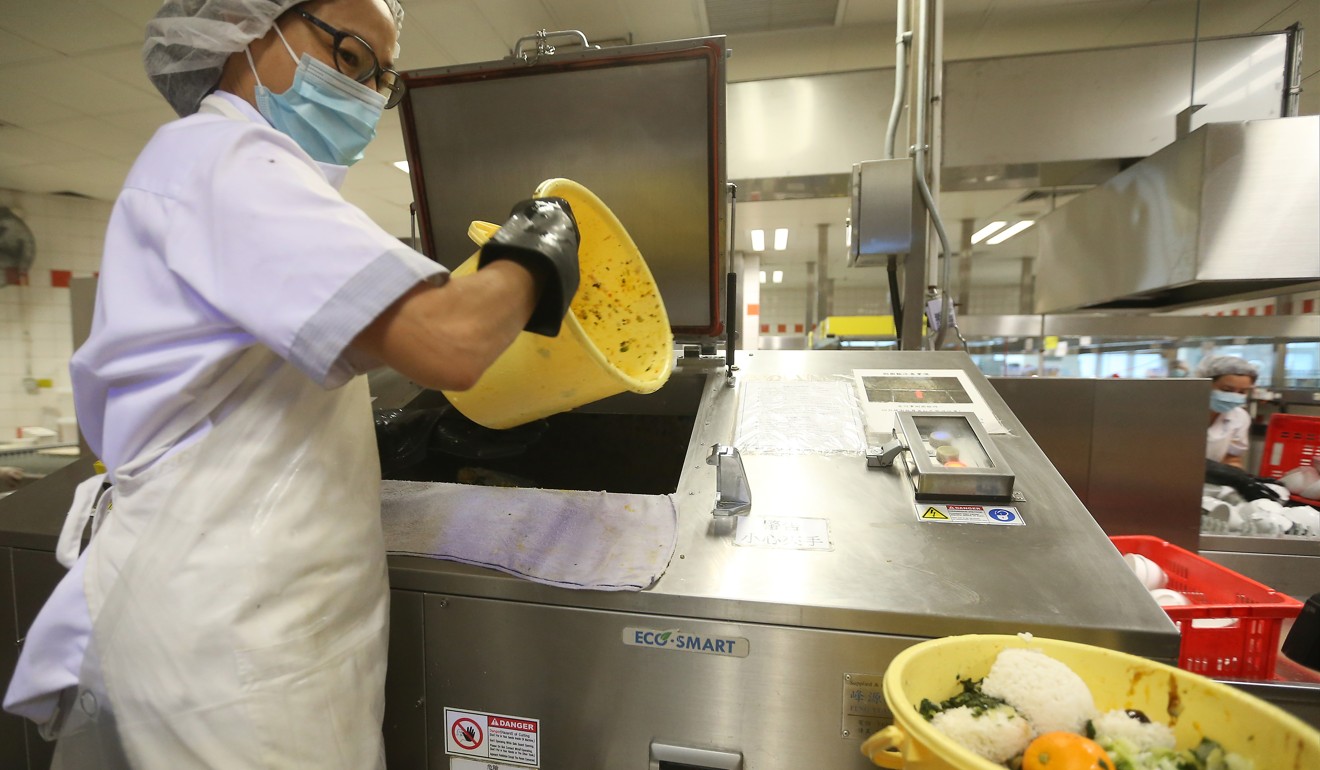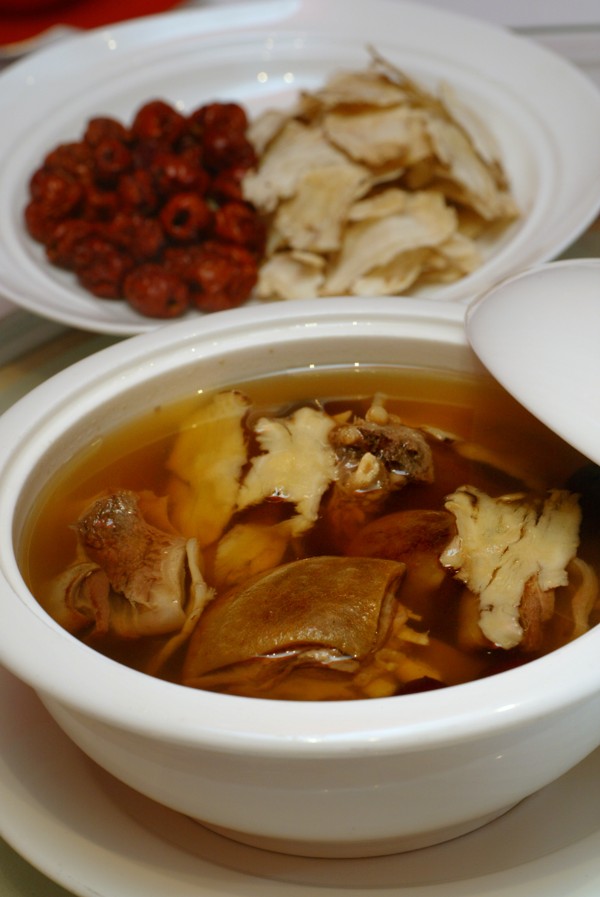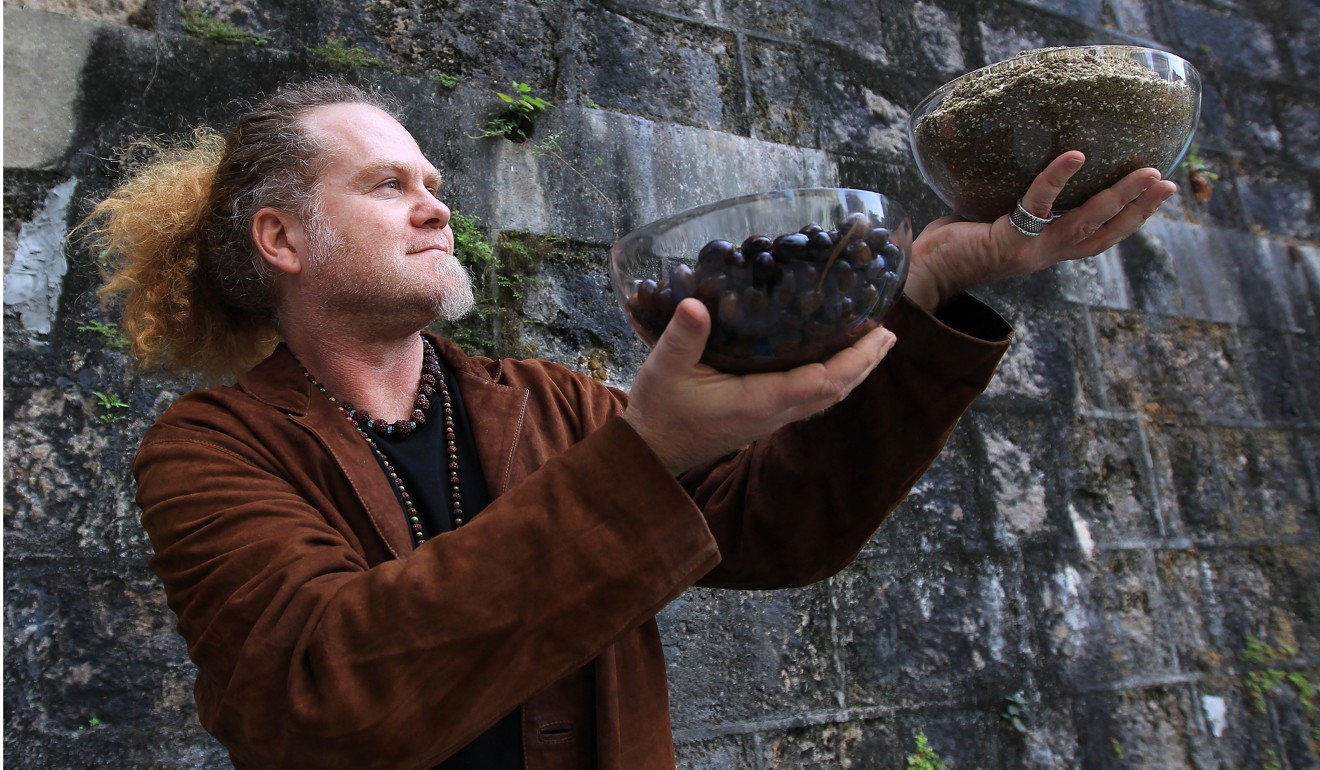
How Cantonese soups create 40 per cent of Hong Kong’s food waste, and why cooking up change starts at home
Amid a rush to reduce plastic rubbish, Hong Kong’s mountains of food waste have largely been forgotten, according to an NGO, but chefs and environmentalists now have an action plan on the table
Every day Hongkongers throw away 450 tonnes of leftover soup ingredients – a weight equivalent to about 1,000 cows, according to a study by a local NGO. The unwanted dregs make up a hefty 40 per cent of all household food waste in the city.
The shocking figures were revealed last week by Food Grace which said the “colossal” problem was being forgotten amid the push to tackle other rubbish such as plastics.
But now a professional Cantonese chef is encouraging cooks to get creative instead of reaching for the rubbish bin.
Chung Chi-keung, head chef at J&T Restaurant in Wan Chai, known for its Cantonese cuisine, says most soup ingredients remain tasty for an extended period as long as they are cooked at the right temperature and correct length of time.

Chung and environmental campaigners have come up with a number of inventive solutions in response to Food Grace’s report.
The NGO’s findings are based on a survey of more than 600 Hong Kong residents which the group says highlights a desperate need for a coordinated campaign to tackle the issue.
How can Hongkongers reduce city’s food waste mountain? Revive, reuse and repurpose the produce you buy
Casey Ng, Food Grace project officer, says that while the media tend to focus on inorganic waste such as single-use plastics, food leftovers bring their own set of problems.
“While it decomposes easily compared to inorganic waste, it produces greenhouse gases such as methane and waste water that harm the environment,” Ng says.

These leftovers also attract pests that spread disease.
But above all, it is the sheer quantity that makes food waste such a massive problem, he says.
“It is simply not sustainable to throw it into landfill.”
The quantities are indeed staggering. The city’s Environmental Protection Department says food makes up 35 per cent of the solid waste going to local landfills, and 65 per cent of this comes from our homes.
Famous chefs put food waste into good use
Wendell Chan, programme officer for the Hong Kong branch of Friends of the Earth, says the government needs to put more resources into education and infrastructure to change household habits.
“First of all, education on food waste needs to start from the school level,” he says. “If you introduce it into schools, kids will pressure their parents to cut waste and recycle. They ask their parents: ‘Why aren’t you doing this?’”
Households can also reduce waste by having a proper meal plan, he believes.
“You don’t always have to cook soups that create so many leftovers. There are soups, such as winter melon soup, where you can eat most of the ingredients, so you don’t get much inedible food waste.
“Secondly, the meat that is used, for example, in pork bone soups, can be chopped up and used for other dishes afterwards.”
How maggots can put China’s mountains of food waste to good use
Chung, a chef of 32 years, agrees. He says chickens used in soup are a prime example of where food can go further.
“The bones can be boiled again to make broth for vegetables, and the leftover meat can be chopped into slices and served in other dishes,” he says.
There has been some improvement in local restaurants, Chung believes. It is now common practice to recycle the leftovers from Chinese soups.

“The situation has become much better. In the kitchen we try to use ingredients to the extent that they can no longer be cooked,” the 45-year-old says. Most ingredients in top-quality soups are collected and reused.
But nothing lasts forever, so what can you do with the dregs when they finally have to go?
Chan says: “We recommend that you talk to your property management office or owners committee to get a composting programme started.”
A programme titled Food Waste Recycling Projects in Housing Estates was set up in 2011 by the government’s Environment and Conservation Fund.
The scheme is allocating HK$60 million (US$7.64 million) in subsidies to encourage housing estates to install composting machines and food waste collection programmes.
Samuel Chui, assistant director of nature conservation and infrastructure planning for the Environmental Protection Department, says 33 estates have applied for funding under the programme.
He says 78,000 households have so far been educated on the waste issue, and 200 tonnes of compost have been produced for greening and landscaping.
But given that Hong Kong produces 3,600 tonnes of food waste per day, these statistics aren’t all that encouraging.
Chan says the number of estates signed up to the scheme is still low due to high costs, since the subsidises only cover between 25 and 50 per cent of the expenditure needed. The application process is also complex, he says.

Bobsy Gaia, a veteran environmentalist and founder of MANA! Fast Slow Food restaurant, says a citywide, government-led initiative with appropriate legislation is required.
Gaia suggests a waste tax similar to that in South Korea – a country widely considered on the cutting edge of food waste reduction. It banned all food waste from landfills in 2005.
South Korea’s government embraces insects to feed on mountain of food waste
The focus on single-use plastic packaging has drowned out concerns about food waste, he adds, but this is slowly changing.
“I’m glad the conversation is turning to food waste,” Gaia says. “Hong Kong produces 120 double-decker buses worth every day, and there’s more of an understanding now that this has to change. People are ready for it now.”
WHY IS SOUP SO IMPORTANT TO CANTONESE MEALS?
An indispensable element of Cantonese cuisine, soup is believed to be beneficial for health in traditional Chinese culture, chef Chung says.
Cold beverages are thought to be harmful to the digestive system, so soup is always served hot.
“In the theory of Chinese medicine, food is an important part of therapy,” Chung explains. “Guangdong province and Hong Kong are humid and hot most of the year, so that’s why we drink a lot of soup, to keep our bodies properly hydrated.”
He says the soups that use the most ingredients are those simmered for long durations – up to three or four hours in some cases to improve consistency and flavour.
TOP FIVE MOST POPULAR CANTONESE SOUPS AND THE PURPORTED BENEFITS, AS RECOMMENDED BY CHEF CHUNG CHI-KEUNG
1. Pork soup with kudzu root, adzuki bean and carp: this concoction is designed for hot and humid summers as it is said to release body heat and eliminate damp, as well as ease muscles and tendons.
2. Pork bone soup with green radish, carrot and corn: this soup is supposed to nourish and tune up imbalances in the body, helping the diner de-stress or detox.
3. Pork lung soup with dried cabbage: said to nourish the lungs and respiratory system and help clear phlegm and stop a cough.
4. Chicken soup with cod and coconut: a soup designed to nourish, boost and re-energise the immune system.
5. Watercress and monk fruit soup with fish: helps boost the immune system and facilitate blood vessel health, according to traditional belief.


